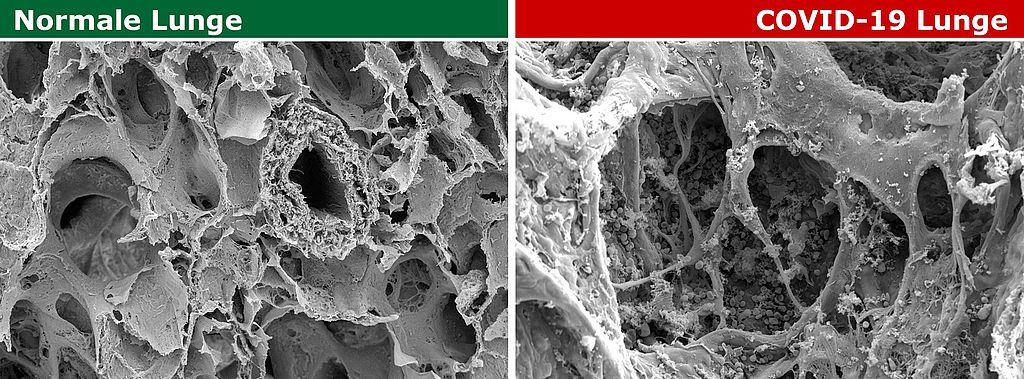Nachrichtenbeitrag
International research group investigates difference between SARS-CoV-2 and flu virus
An international group of researchers has investigated the difference between the new coronavirus and flu viruses. This could also lead to new treatment methods.
WITTEN-HERDECKE (NNA) – New findings of an international group of researchers on the way that the SARS-CoV-2 virus works have revealed the differences of the new virus to flu viruses and could also lead to new treatment methods, Witten-Herdecke University (UWH) says in a press release.
According to an international study involving the Wuppertal, Harvard, Basel, Leuven and Hanover university hospitals, the SARS-CoV-2 virus primarily attacks vascular structures (endothelial cells) leading to a heightened inflammatory reaction. This was comparable to a rejection reaction following an organ transplant. It was the most important result of an international study published in the New England Journal of Medicine, the press release adds.
“We were able for the first time to show the pronounced, extensive vascular damage, reducing blood flow to the end organs such as the lungs, heart, kidneys and brain,” Dr Maximilian Ackermann, a researcher at the Institute of Pathology and Molecular Pathology of the Wuppertal Helios University Hospital, explained the cause of the clinically observed complications (microembolisms) in COVID-19 patients. The lungs in particular required an intact vascular system for maintaining oxygen uptake.
“This mechanism of angiogenesis and inflammation in COVID-19, described for the first time, is responsible for the degree of severity of the disease and demonstrates that respiratory failure in COVID-19 is crucially due to vascular damage,” said Prof Hans Michael Kvasnicka, director of the Institut of Pathology and Molecular Pathology and professor of pathology at Witten/Herdecke University.
New treatment approaches
The study was also able to show for the first time that the disruption of the blood flow triggers a special form of new vessel growth (intussusceptive angiogenesis) leading to the further escalation of the T-cell induced inflammatory reaction.
New approaches to the treatment of the disease complications could result from these new research results, Witten/Herdecke University writes in its press release. “We now see COVID-19 to a lesser extent solely as a lung disease and to this extent the observed restriction of blood flow as well as of angiogenesis could in future form the new target of therapeutic measures,” added Prof Kvasnicka.
Hence extended immunomodulatory treatment approaches also made sense which helped to inhibit the SARS-CoV-2-induced inflammatory reaction. Immunomodulation refers to the action of pharmacologically active substances on the immune system.
END/nna/ung/cva
Item: 200617-04EN Date: 17 June 2020
Copyright 2020 Nexus News Agency. All rights reserved.

